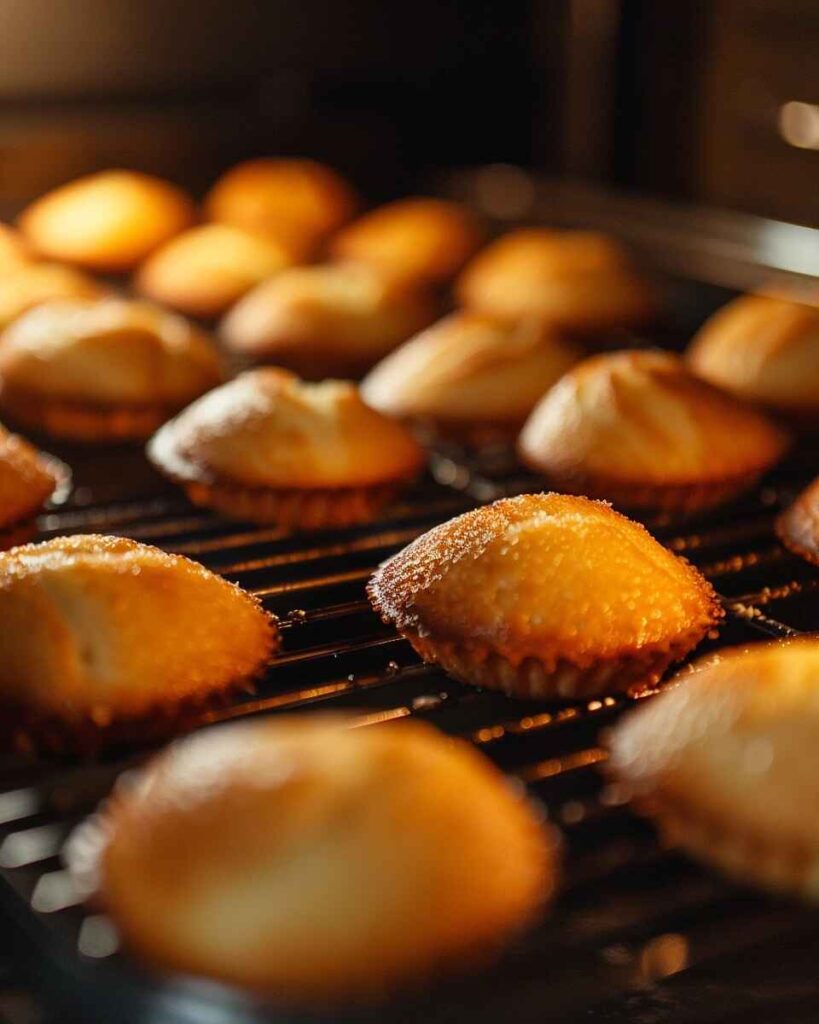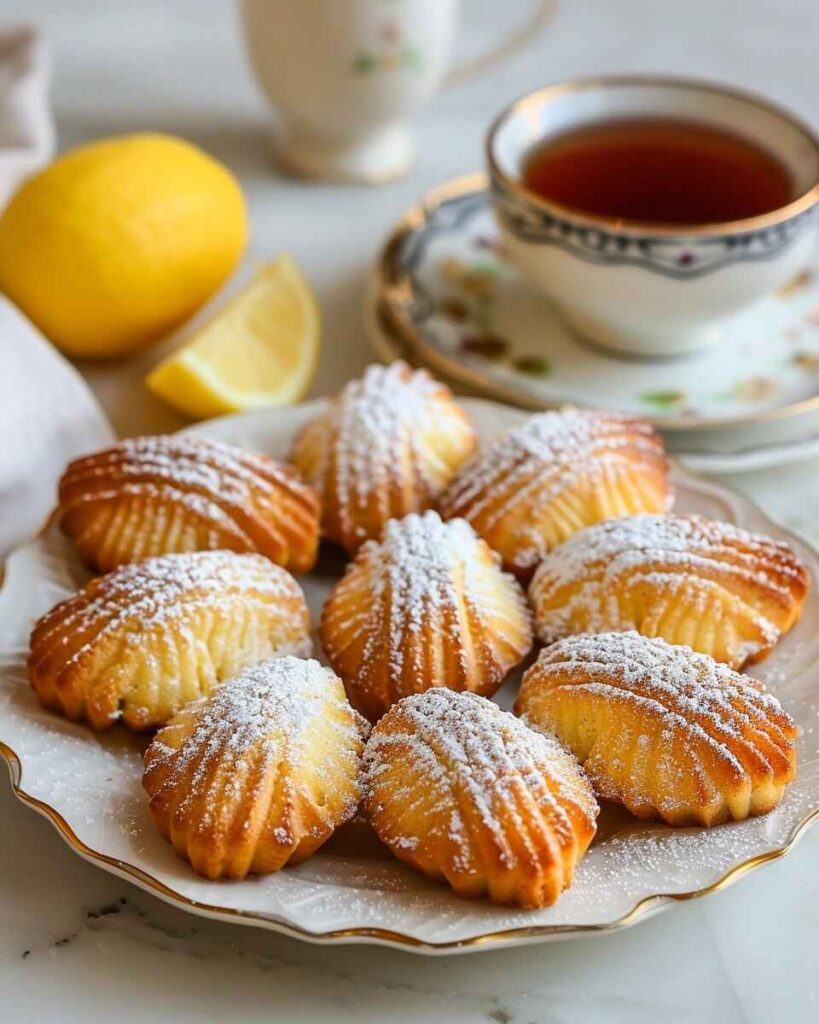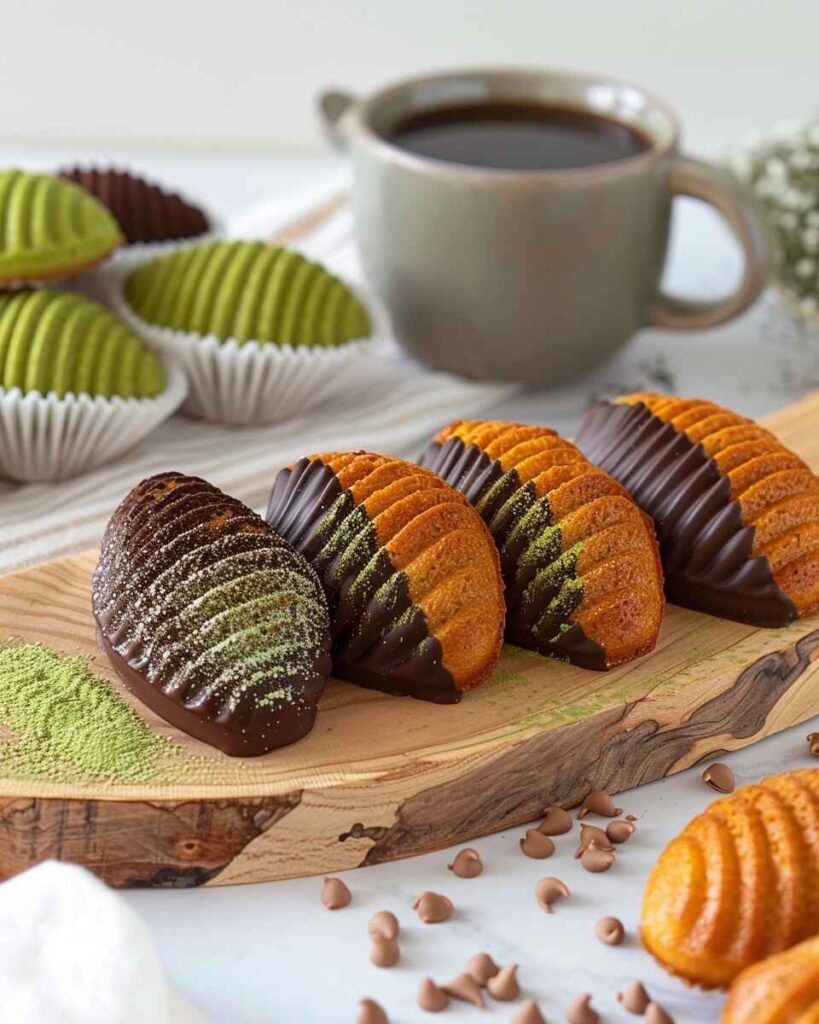Have you ever taken a bite of a perfectly baked French madeleine—that delicate, shell-shaped sponge cake with a crispy edge and a buttery, soft center? If you have, you know it’s pure magic!
But let’s be honest—homemade madeleines don’t always turn out as they should. They might be too dense, too dry, or worse, they might not even have that signature hump! 😱
Don’t worry! In this ultimate guide, I’ll show you how to make homemade madeleines just like a professional French pastry chef. We’ll cover everything—from choosing the right ingredients to nailing the perfect baking technique. By the end, you’ll be whipping up these delicious treats with confidence!
Table of Contents
“Madeleines are not just a dessert; they’re a bite-sized piece of Parisian elegance.”
Introduction to French Madeleines
The History and Origin of Madeleines 🇫🇷
Madeleines have been around for centuries, but where did they come from? The story goes that they were first baked in the 18th century in France’s Lorraine region. A pastry chef named Madeleine Paulmier is said to have created them for the Duke of Lorraine. From there, they gained popularity, eventually becoming a beloved French delicacy.
Why Are Madeleines So Popular? 🤩
These little sponge cakes are famous for their light, airy texture and slightly crispy edges. They’re perfect for dipping into tea or coffee ☕, and their unique shell shape makes them both elegant and fun to eat. Plus, they’re surprisingly easy to make—once you know the secrets!
Essential Ingredients for Authentic Madeleines
Let’s talk ingredients. The beauty of madeleines is that they require only a few simple ingredients, but each plays a crucial role in achieving the perfect texture and flavor.
| Ingredient | Quantity | Why It’s Important |
|---|---|---|
| All-Purpose Flour | 1 cup (120g) | Gives structure to the batter |
| Unsalted Butter | 1/2 cup (113g) | Adds richness and flavor |
| Eggs | 2 large | Helps create that airy texture |
| Granulated Sugar | 1/2 cup (100g) | Sweetens and stabilizes the batter |
| Baking Powder | 1 tsp | Helps create the signature “hump” |
| Lemon Zest | 1 tsp | Adds a fresh, citrusy aroma |
| Vanilla Extract | 1 tsp | Enhances overall flavor |
| Milk | 1 tbsp | Loosens the batter slightly |
| Salt | 1/4 tsp | Balances the sweetness |

Flour Selection: What Type Works Best?
For madeleines, all-purpose flour is the best choice. It provides just the right amount of structure while keeping the cakes light and fluffy. Avoid using cake flour, as it can make the madeleines too delicate, and bread flour is too heavy.
The Role of Butter: Unsalted vs. Salted
Traditional French madeleines use melted unsalted butter, which gives them that rich, tender crumb. If you only have salted butter, reduce the added salt in the recipe.
Eggs and Sugar: Achieving the Perfect Texture
Eggs are crucial for creating a light and airy batter. The key is to whisk them with sugar until they become pale and fluffy. This step incorporates air into the batter, which helps with the rise.
Baking Powder or No Baking Powder?
Some traditional recipes don’t use baking powder, relying instead on the air trapped in the batter. But if you want a guaranteed hump, a small amount of baking powder gives extra lift.
The Secret Ingredient: Lemon Zest or Vanilla?
Madeleines have a delicate flavor that’s typically enhanced with either lemon zest or vanilla extract. Many French bakers prefer lemon zest for its fresh, citrusy aroma, but vanilla works beautifully as well. Want the best of both worlds? Use both!
Step-by-Step Guide to Making Perfect Madeleines
Now for the fun part—making the batter and baking these beauties!
Step 1: Preparing the Batter – The Classic Technique
Start by whisking the eggs and sugar together in a mixing bowl. You want the mixture to become thick, pale, and fluffy. This is the secret to achieving a light texture.
Step 2: The Importance of Resting the Batter
Here’s a pro tip: Let the batter rest in the refrigerator for at least 1 hour (or overnight). This step is crucial for developing the signature madeleine hump.

Step 3: Preparing the Madeleine Molds Properly
To prevent sticking, generously butter your madeleine molds and lightly dust them with flour. This ensures easy release after baking.
Step 4: Achieving the Signature “Hump” Effect
That classic hump isn’t just for looks—it’s a sign of a well-made madeleine! The trick? Chilling the batter before baking and using a hot oven (375°F/190°C). The temperature contrast creates steam, which puffs up the center.
Step 5: Baking at the Right Temperature
Pop your madeleines into a preheated oven and bake for about 10-12 minutes. You’ll know they’re done when they turn golden brown and spring back when lightly pressed.

Step 6: Cooling and Serving for the Best Flavor
Let the madeleines cool slightly before removing them from the mold. Enjoy them warm or dusted with powdered sugar for an elegant touch!
Nutrition Facts (Per Madeleine)
| Calories | Carbs | Fat | Protein | Sugar |
|---|---|---|---|---|
| 100 kcal | 12g | 5g | 2g | 7g |

Common Problems When Making Madeleines and How to Fix Them
Even if you follow the recipe perfectly, you might still run into some baking mishaps. Let’s troubleshoot some of the most common madeleine problems and their solutions.
Why Don’t My Madeleines Have a Hump?
The signature madeleine hump isn’t just for looks—it’s proof that your technique is on point! If your madeleines turn out flat, here’s what could have gone wrong:
- You didn’t chill the batter long enough. Resting the batter in the fridge for at least an hour (or overnight) helps create the temperature shock needed for the hump.
- The oven temperature was too low. Baking madeleines at 375°F (190°C) ensures that the batter puffs up quickly.
- You opened the oven door too soon. Avoid peeking before at least 8 minutes of baking time.
My Madeleines Are Too Dense – What Went Wrong?
If your madeleines turn out dense instead of light and fluffy, here’s why:
- The eggs and sugar weren’t beaten enough. You need to whisk them until they’re pale and airy—this incorporates essential air into the batter.
- You overmixed the batter. Stirring too much deflates the air bubbles, making the texture heavy.
- The oven temperature was too low. A hot oven gives the batter a quick rise, keeping it light.
How to Prevent Madeleines from Sticking to the Mold
Few things are more frustrating than madeleines getting stuck in the mold. To avoid this:
- Grease the molds well. Use melted butter, then lightly dust with flour.
- Use non-stick madeleine pans. High-quality non-stick pans help prevent sticking.
- Let them cool slightly before removing. Don’t rush—warm madeleines come out easier than piping hot ones.
Avoiding Dry or Overcooked Madeleines
Dry madeleines usually mean they were baked too long or at too high a temperature. Try these fixes:
- Reduce baking time. Stick to 10-12 minutes max.
- Lower the oven temperature slightly. If they’re browning too fast, reduce by 10°F.
- Use fresh ingredients. Old flour or expired baking powder can affect texture.
How to Get the Perfect Golden Color
Want a beautifully golden-brown finish? Try these tips:
- Brush the molds with butter. It helps create a crisp edge.
- Don’t overcrowd the oven. Air circulation ensures even baking.
- Use the right sugar. White granulated sugar caramelizes beautifully.
Flavor Variations to Try for Creative Madeleines
Classic lemon madeleines are great, but why not get a little creative? Here are some fun flavor twists:
Chocolate-Dipped Madeleines
Dip one side of your madeleines in melted dark or milk chocolate for an extra indulgent treat!
Orange and Almond Infused Madeleines
Add orange zest and a touch of almond extract for a warm, nutty flavor.
Matcha Green Tea Madeleines
Replace 1 tsp of flour with matcha powder for a unique, slightly bitter twist.
Raspberry or Blueberry Madeleines
Gently fold in freeze-dried berries before baking for a fruity burst of flavor.

Storing and Preserving Your Madeleines
How to Keep Them Fresh for Longer
Madeleines are best enjoyed fresh, but you can store them for later:
- Store in an airtight container. They’ll stay fresh for 2-3 days at room temperature.
- Use parchment paper between layers. This prevents sticking.
- Reheat in the oven for a few minutes. It brings back the crisp edges.
Can You Freeze Madeleines?
Yes! To freeze madeleines:
- Let them cool completely.
- Wrap each one in plastic wrap.
- Place them in a zip-top bag and freeze for up to 2 months.
- To enjoy, thaw at room temperature or warm them in the oven.
Serving Suggestions and Pairing Ideas
The Best Drinks to Serve with Madeleines
Madeleines pair beautifully with:
- Tea (Earl Grey, chamomile, green tea)
- Coffee (espresso, cappuccino, or café au lait)
- Hot Chocolate (for an ultra-decadent pairing!)
- Sweet Wine (like Sauternes or Moscato)
How to Present Madeleines for Special Occasions
Want to impress guests? Try these ideas:
- Dust with powdered sugar. A light sprinkle makes them look elegant.
- Serve on a tiered cake stand. Perfect for tea parties.
- Drizzle with glaze. A lemon or chocolate glaze adds extra sweetness.
Conclusion: Mastering the Art of French Madeleines at Home
And there you have it—a foolproof guide to making homemade madeleines like a French pastry chef! With the right technique, a little patience, and a few pro tips, you’ll be baking batch after batch of these delightful treats. Whether you stick with the classic lemon flavor or experiment with creative variations, your madeleines will always be a hit. Bon appétit!
Print
How to Make Homemade Madeleines Like a French Pastry Chef
- Total Time: 1 hour 27 minutes (including chilling time)
- Yield: 12 madeleines 1x
- Diet: Vegetarian
Description
Delicate, buttery, and slightly crispy on the edges, these classic French madeleines are the perfect tea-time treat. This foolproof recipe ensures light, fluffy madeleines with the signature hump—just like the ones in a Parisian bakery! 🍋🍪
Ingredients
Basic Madeleines
- 1 cup (120g) all-purpose flour
- 1/2 cup (113g) unsalted butter, melted
- 2 large eggs
- 1/2 cup (100g) granulated sugar
- 1 tsp baking powder
- 1 tsp lemon zest (or vanilla extract)
- 1 tbsp milk
- 1/4 tsp salt
For the Pan (to prevent sticking)
- 2 tbsp melted butter (for greasing)
- 1 tbsp flour (for dusting)
Optional Additions:
- 1/2 cup melted dark or milk chocolate (for dipping)
- 1 tsp matcha powder (for green tea madeleines)
- 1/2 cup freeze-dried berries (for fruity variations)
Instructions
Step 1: Prepare the Batter
- In a mixing bowl, whisk eggs and sugar together until pale and fluffy (about 5 minutes).
- Add lemon zest (or vanilla) and mix until combined.
- In a separate bowl, sift together flour, baking powder, and salt.
- Gently fold the dry ingredients into the egg mixture.
- Add melted butter and milk, stirring until smooth.
Step 2: Rest the Batter
- Cover the bowl and refrigerate the batter for at least 1 hour (or overnight for best results).
Step 3: Prepare the Madeleine Pan
- Grease madeleine molds with melted butter and lightly dust with flour.
Step 4: Bake the Madeleines
- Preheat the oven to 375°F (190°C).
- Fill each mold about ¾ full with batter.
- Bake for 10-12 minutes, or until golden brown and slightly puffed in the center.
Step 5: Cool and Serve
- Let them cool in the pan for 5 minutes before transferring to a wire rack.
- Dust with powdered sugar or dip in melted chocolate, if desired.
Notes
- Chilling the batter is key for getting the signature hump!
- Don’t overmix the batter—gently fold for a light texture.
- Store in an airtight container at room temperature for up to 3 days.
- Prep Time: 15 minutes
- Cook Time: 12 minutes
- Category: Dessert
- Method: Baking
- Cuisine: French
Nutrition
- Serving Size: 1 madeleine
- Calories: 100 kcal
- Sugar: 7g
- Sodium: 50mg
- Fat: 5g
- Saturated Fat: 3g
- Unsaturated Fat: 2g
- Trans Fat: 0g
- Carbohydrates: 12g
- Fiber: 0.5g
- Protein: 2g
- Cholesterol: 30mg







